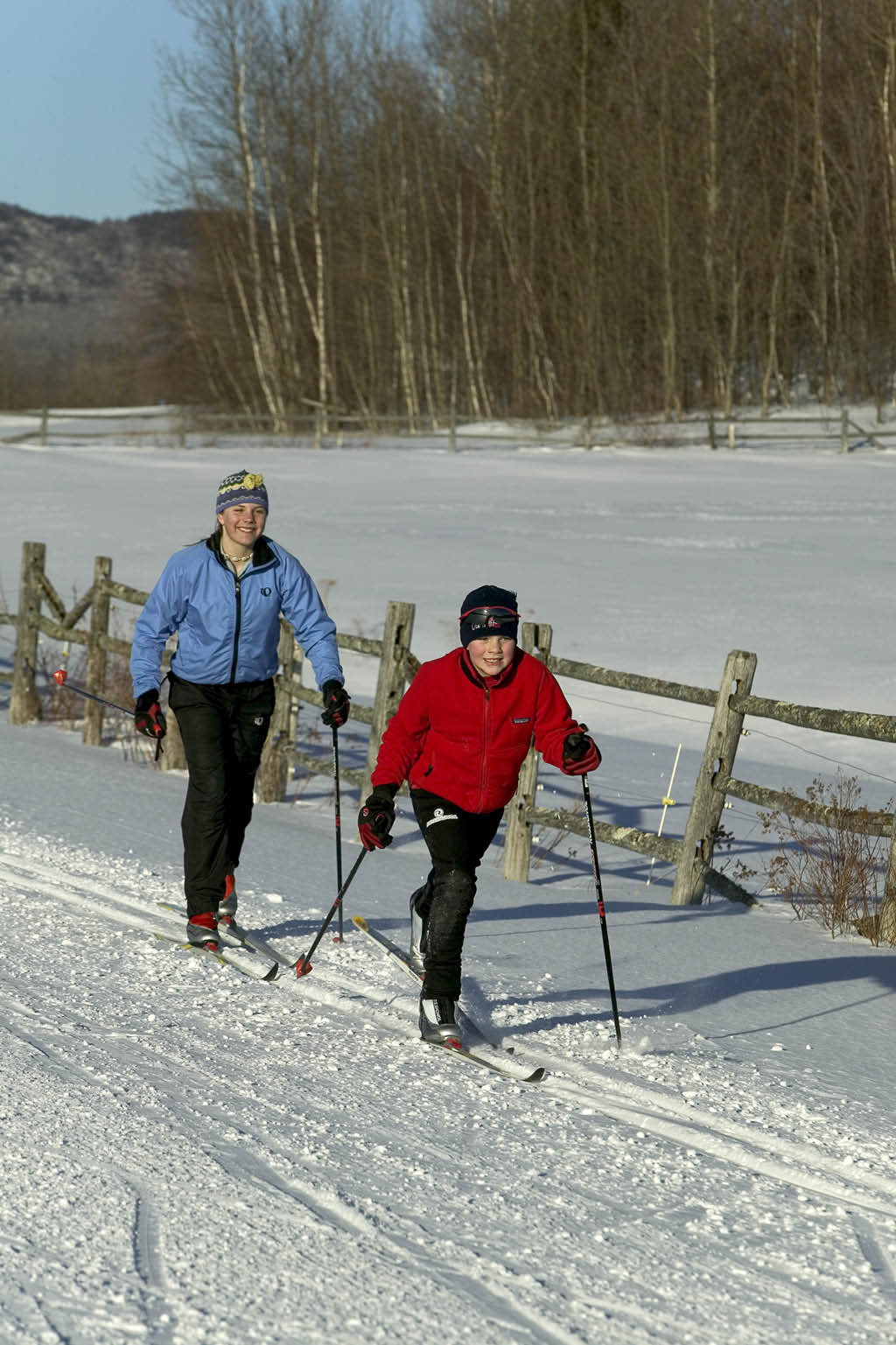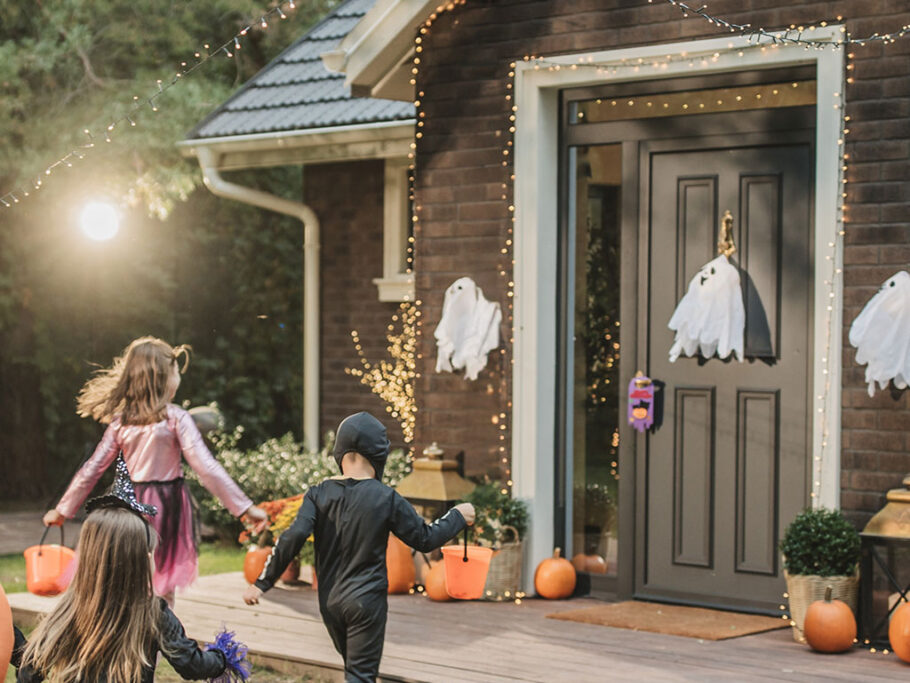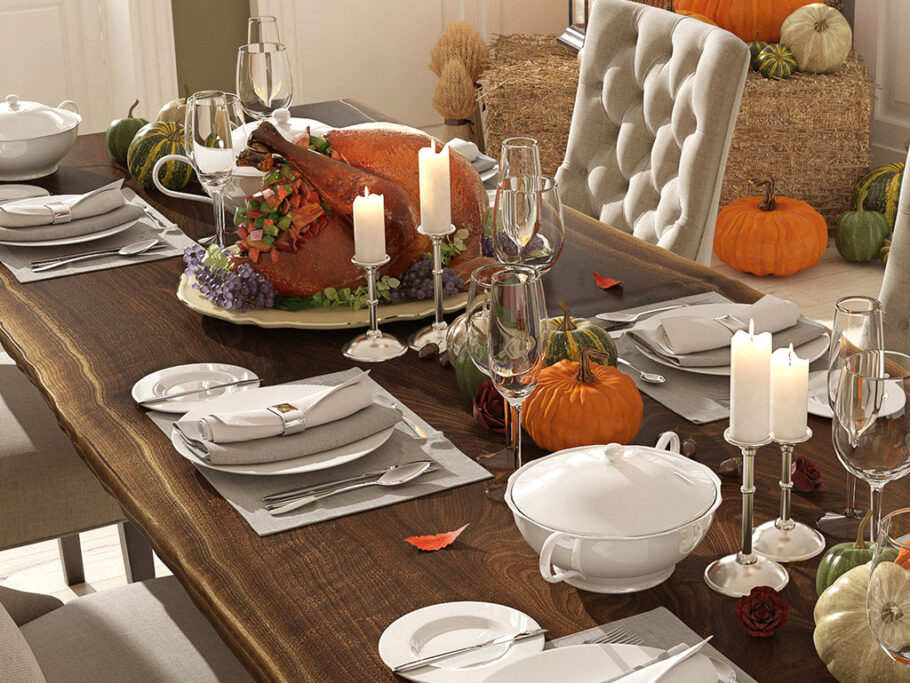Snowshoeing through Vermont: Inn to Inn in Robert Frost Country
Night has fallen by the time I make my way into Brandon, Vermont—a tiny town just over an hour south of Burlington. A dainty snow shower welcomes me into this quiet community. A handful of streetlamps light up what appears to be downtown as I venture past antique shops and artisan studios toward the dark, winding roads ahead. My accommodations for the night are located another four miles farther on the outskirts of town—or so I hope as I blindly mosey along. Around a few bends later, I spot a yellow glow through the sea of darkness—there, nestled snugly within the trees, is the Churchill House Inn.
The inn has sat on this small parcel of land since the nineteenth century, when the Churchill family established a small dwelling and mill along the Neshobe River. As their story goes, the Churchills would host overnight guests who had traveled the difficult route from Rochester over the Brandon Gap to have their grain milled. Along with enjoying hearty meals, guests were often invited to dance the night away to the sounds of the three-piece orchestra on the third-floor ballroom. I enter into the bright sun porch of this seasoned building, secretly hoping a vintage dance party might kick up during my stay.
My travel companion, Deborah Lewis, warmly greets me at the door, eager to dish out the rundown of our weekend adventure. As the proprietor of Bredeson Outdoor Adventures (a New England-based outfitter specializing in personalized hiking, snowshoeing, and cross-country skiing trips across northeastern United States and Europe), Deborah has customized the perfect getaway for us, marrying relaxation with challenging expeditions: we will be snowshoeing seven-plus miles through the vigorous trails of Robert Frost Country as we hike door-to-door from one luxurious inn to another.
Anxious for tomorrow’s adventure, I retire to my guestroom early, which is tucked away in a private corner on the first floor. The colorful stained glass window in the bathroom immediately catches my eye, but there are many more vintage treasures to be found (some of which are original to the inn). While admiring these artifacts, I notice the commodious room is bereft of the typical technology staples—no television, phone, or computer in sight—just peace and quiet. I sink underneath a handmade patchwork quilt for some uninterrupted sleep.

After waking up apprehensive about the snowshoeing, I join Deborah for breakfast. Thankfully, the delicious country fare being served is helping to calm my nerves. Innkeeper Seth Hopkins is pampering us with a full feast including his signature mini pancakes (sized a little larger than half dollars) served with sausage, fresh blueberries, and a juicy chunk of cantaloupe. The addictive hotcakes have a prominent eggy flavor, and pair perfectly with the maple syrup (the same syrup served at the White House) that Seth picked up especially for us.
Whether I was ready or not, we bid adieu to Seth, who would be kindly taking our belongings to the next inn, and headed on our journey. Our route crosses through the Moosalamoo portion of the Green Mountain National Forest, which includes 20,000 acres of pristine wilderness and over seventy miles of well-maintained skiing, snowshoeing, and snowmobiling trails—as well as hiking, biking, and horseback riding avenues during the warmer months. With easy access to the path right at the inn’s doorstep, Deborah and I leave the ease of the paved walkway and touch down onto snow.
As I strap the long, metal snowshoes to my hiking boots, I assume there must be some special stepping technique I’d need to master. But Deborah assures me that all I need to do is remember that I am now walking with “big feet,” and I’ll be fine. So with wide strides and admittedly a bit of a waddle, I traverse confidently across the snowmobile trail without difficulty. Unfortunately, I quickly become distracted by the unspoiled wilderness, and find myself falling back into my usual stride—and clumsily falling all over myself into the snowbank as a result.
It’s nearly impossible to keep my attention on walking when the landscape is this mesmerizing! As grueling as the steep, uphill climb is at times, the discomfort is quickly offset by views of rugged mountaintops in the distance and the sparkling lakes below. The blue skies make the blanket of snow glitter across the forest bottom, and the dormant trees add texture around batches of young American beech trees desperately holding onto the last of their sparse, orange leaves. We stop under a hemlock tree to breathe in the scenery.
When the crinkling of snow beneath your shoes ceases, you can fully appreciate the solitude of the great outdoors. Listen closely, and you might hear the faint trickling of a partially frozen stream underfoot or the knocking of a woodpecker in the distance. In our case, the area is so quiet that the sound of our banter produces enough vibration to shake a mound of snow from a branch above, burying the tracks where we once stood only moments before. As we laugh at the circumstance, Deborah (who is as proficient in Robert Frost poetry as she is in navigating the snowy tundra) is reminded of a poem, which she recites verbatim: “The way a crow/Shook down on me/The dust of snow/From a hemlock tree/Has given my heart/A change of mood/And saved some part/Of a day I had rued.”

Deborah beckons me off the conditioned snowmobile trail to break ground through deep, backcountry snow. Down this road less traveled by, if you will, we bushwhack across undergrowth, ducking under lowhanging tree branches and shimmying carefully across fallen timber to cross a stream. The untracked powder is understandably more challenging to maneuver through, yet it provides a more authentic snowshoeing experience. And as difficult as areas on this makeshift route are to pass in snowshoes, it’s amazing to think that my guide followed this same path the day before on long, narrow, cross-country skis!
Just when I am on the brink of exhaustion, the isolated Blueberry Hill Inn appears in the horizon—the blue façade and red door are a sight for sore eyes. There is something romantic about becoming acquainted with a place after hours of anticipation mounting with every step you take. There is truly no better way to arrive.
The history of the Blueberry Hill Inn has a romantic twist of its own. Long before innkeeper Tony Clark followed Johannes von Trapp’s encouragement to open a ski touring center in the early 1970s, the 1813 farmhouse was home to Elsie and John Masterton, a hopelessly naïve couple who left their booming cosmopolitan lifestyle in the 1940s to open a downhill ski area in this tiny Vermont town. Although their idealistic plan fell flat, the incidental inn remained prosperous, thanks to Elsie’s renowned cooking. Current owner Tony Clark has since successfully elevated the charming inn to a leading cross-country hub, all the while making tireless strides to push for habitat conservation throughout the now Moosalamoo National Recreation Area.
Stepping inside Blueberry Hill Inn is like stepping into a relative’s home during the holidays. Hearty laughter escapes from the kitchen and fills the house with a casual coziness; the understated rooms fashioned with antiques mirror the informal atmosphere. The ease and pleasure of getting to know the staff and fellow guests has me relaxing in the common areas in front of the fire. How quickly the inn becomes a place that I know so well!
The incredible aroma of the night’s dinner is too much to bear, so I venture outside to rejuvenate in the wood-burning sauna. Across a frozen springfed pond, the outbuilding sits in solitude, lit by one faint light in the dressing quarters. Inside the sauna, the nightfall has created the perfect ambiance for soothing my aches and pains and clearing my mind. Of course, for those who can’t handle the heat, the inn also offers locally-made lavender bath salts for an equally indulgent, en suite spa treatment.
Food is the epicenter of the Blueberry Hill Inn. Whether you are hanging by the cookie jar chatting with the gregarious manager as she prepares the evening’s meal in the open kitchen, or getting to know new friends over wine and hors d’oeuvres, the dining scene is arguably better than any five-star restaurant. Seated at a long dining table, we enjoy an unhurried, four-course dinner by candlelight—devouring seasonal dishes like fresh salmon cakes and beef tenderloin roast with a wild mushroom sauce—as everyone recaps their day’s excursions.

The staff feeds us equally as well come morning, preparing us for hours of recreation across the vast, natural playground. With over forty miles of trails winding through their backyard, and equally as many years experience in cross-country sports, the Blueberry Hill Ski Center is never short of things to do. You can snowshoe one day and cross-country ski the next on some of the most scenic paths (both backcountry and groomed) in all of Vermont, without covering the same ground twice.
I could spend all day exploring the treasures hidden here, but a short drive gives us access to a number of other wilderness routes—like the 300-mile Catamount Trail that spans the state of Vermont from top to bottom, or the Robert Frost Trail that retraces the poet’s footsteps and illustrates various imagery found within his work.
Before retiring for the day, we stop at the Homer Noble Farm—because no trip to Robert Frost Country is complete without a visit to the poet laureate’s old stomping grounds. Down a snow-rutted country road, we find a large farmhouse and rustic cabin amidst a frozen meadow. Robert Frost purchased this property in 1939, and the tiny cabin became his summer residence every year until his passing in 1963. Although the place remains locked to the public, we are able to peer through the windows to catch a peak at the accommodations that fostered so many of his literary masterpieces.
Stealing a glimpse of the home and the views that inspired this literary genius has left me unable to completely say goodbye to Vermont and all its wonder. So instead, I take a piece of the Green Mountain State back home with me. Not a photograph or postcard, but rather a book—a collection of Frost’s poetry—so that I can become better acquainted with the land I met this weekend and the nature he knew so well, despite all the miles and years that now separate the two.






















